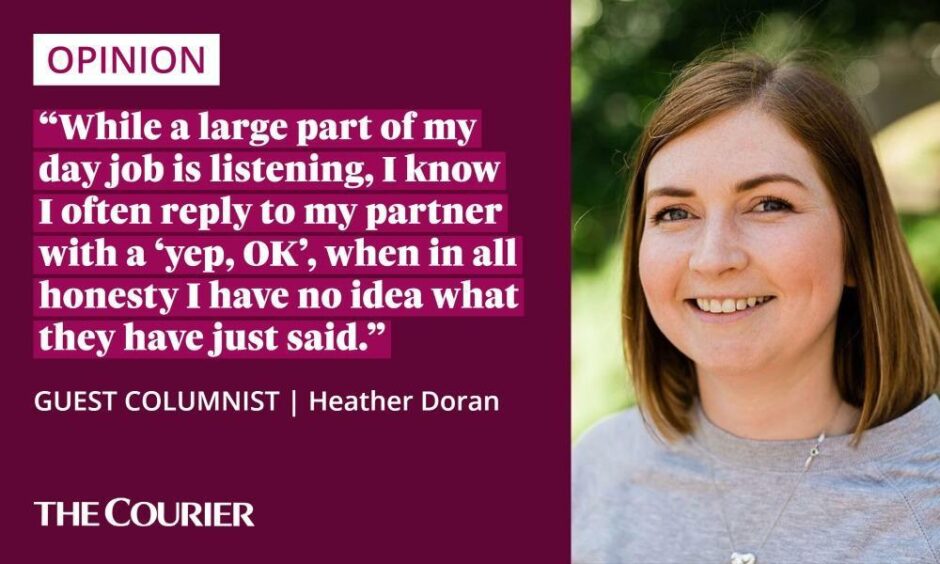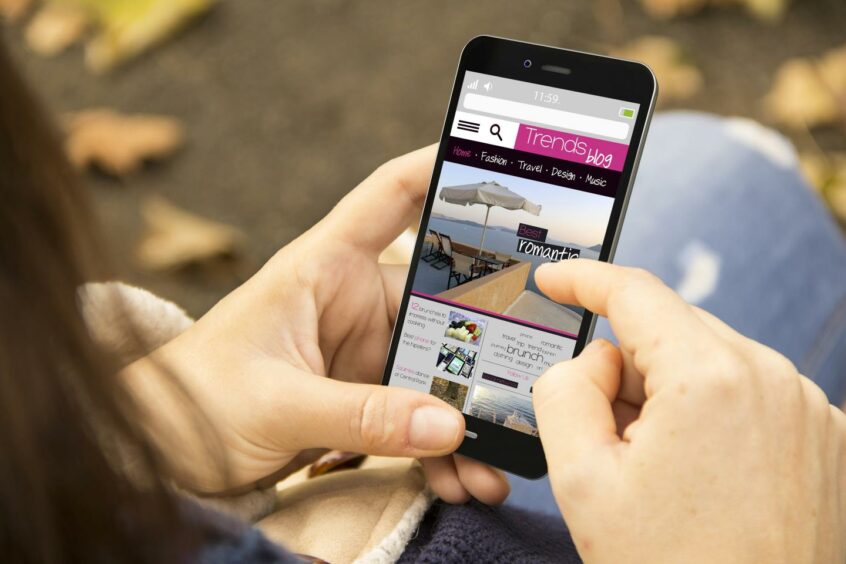Can you remember what the last person you spoke to said?
What I’m asking is – did you really listen to them?
It’s the one skill we seem to have collectively forgotten over the past few years.
And while lots of us seem to have plenty to say about life at the moment, we can’t really expect our society to function and our relationships to work if none of us are doing the listening.

Leaders are taught to listen in training courses. It’s a way to build trust with their teams.
It should be the same for governments. If people don’t feel they are being listened to how can they trust in the decisions being taken?
A democratic society relies on debate and discussion. And that includes listening to people, even when you don’t agree with them.
But women in particular can find it challenging to be heard.
Studies have shown people are less likely to accept information when the person communicating it is female, despite their knowledge being every bit as good as a male speaker’s.
Busy lives make it hard to be heard
Listening is a relatively simple thing to do.
It could improve how we all live.
But just because something is simple it doesn’t mean it’s easy.
And there are good reasons why we don’t do it well.
Busy lives and constantly being bombarded with information makes it difficult to cut through the noise and distractions.
You can’t listen when you are being interrupted by notifications on your mobile phone and laptop all the time.
And while a large part of my day job is listening, I know I often reply to my partner with a ‘yep, OK’, when in all honesty I have no idea what they have just said.
It’s probably something about dinner but it might have been something important.
And in that moment I have missed out on an opportunity to properly connect.
It’s the same with children. We tell kids to listen to us all the time – but how many of us actually listen to them?
Yet that small act of not listening can lead relationships down a slippery slope to a place where people don’t feel heard or understood.
Make space for listening
On a serious point, it is clear we have a mental health issue, locally and in the wider UK.
And while there has been a huge and welcome focus on getting people to talk in the past few years, particularly men, that might not be enough.
Yes, talking helps. But people also need to be heard and understood.
That’s why first aid mental health courses all focus on the role of listening for the first aider.
We offer you a space where you can talk about how you feel, without judgement or interruption.
If you want to talk, we're here to listen. 💚 pic.twitter.com/kQ4AoKPv4W
— Samaritans Scotland (@Sams_Scotland) February 19, 2022
So what can we do to listen well?
Most conversations are a back-and-forth – each of us just saying our bit for the other person to hear.
We are often just waiting for a gap in the conversation so we can raise our own voice.
To really make it work, we need to listen, to fully understand the point the other person is making.
To listen well you need to throw the thing you want to say out of your head and focus on what the other person is saying.
Remove distractions, like mobile phones. Create a space where you know you can focus on listening.
Only then can we have meaningful dialogue.
Workplace techniques would work at home too
I work with a lot of people who have extremely in-depth knowledge about science.
They are the experts, sometimes the only expert in that area.
To do my job well I need to understand what they are trying to tell me so I can help share that work.
To make sure I’ve properly understood something I repeat it back to them.
I ask more questions about what they have been discussing and avoid only responding with my own experience.
A good follow-up question is “how did that make you feel?” Use it outside the workplace too, and acknowledge what the person has shared.
I have learned to listen hard in my workplace, but I don’t apply this well at home.
And I know I should. Maybe you should too.
Listening can help personal relationships, as well as work relationships.
If you can help others to feel heard, maybe people will allow your voice to be heard too.
Heather Doran is a public engagement manager at the Leverhulme Research Centre for Forensic Science, part of Dundee University.












